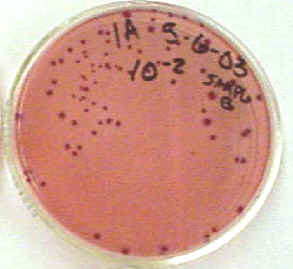
Laboratory Investigations in Microbiology

 |
Laboratory Investigations in Microbiology |
 |
Outbreaks of food-borne illnesses occur quite frequently in the United States, despite technologies that have made food preparation faster and safer. The CDC estimates 5,000 deaths from food-related illnesses annually. Of these, roughly 500 deaths annually result from Salmonella poisoning, and 500 deaths from Listeria. With such large numbers of illnesses and fatalities resulting from a source that is generally preventable, it is no surprise that a lot of resources are committed to testing the safety of food.
Similar to water quality testing, much of food safety testing relies on the detection of indicator organisms. Since many food-borne illnesses utilize the oral-fecal route, monitoring for coliform contamination is a good indicator for the general sanitary status of most foods. While viruses and protozoan contaminants cannot be detected this way, the most common bacterial pathogens can be avoided.
So what number of coliforms is acceptable on food? Most states have their own regulations. Typically, coliform counts on foods are permitted to be ~ 50 - 100 per gram on uncooked chicken and hamburger. To determine the coliform count on food products, a selective/differential medium will be used. VRBA is selective for Gram-negative enterobacteria and differential for lactose fermentation.
Another index of food safety is the total bacterial count. This count includes many of the Gram-positive spoilage bacteria that are restricted by the VRBA medium.
The usefulness of these food counts is twofold: to indicate how close the food is to the point of spoilage. There are no hard and fast rules, but food counts should be < 100,000 colonies per gram (ref). Another indicator of food pertains to potential pathogens. Whereas the limit for known pathogens (E. coli, Salmonella, Listeria) is zero, other organisms can indicate the sanitary condition of food as well. A coliform count of < 100 per gram is desirable. An E. coli count should be 0 - 50 /gram (depending on food type).

Thursday
© 2003 - 2025 José de Ondarza, Ph.D.